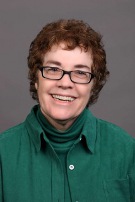Letter from the President
IAMCR Newsletter - November 2017
Dear Colleagues,
Warmest wishes to everyone! As we move toward the end of another year, it may be a good time to recap some of the key events/developments for IAMCR during 2017.
Above all, our conference in Cartagena, Colombia, attracted over 1,400 delegates and inspired 11 pre- and post-conferences. The reviews by participants were positive and indicated general satisfaction with the academic quality and general organization of the event.
In addition to the numerous publications by our members (which are regularly featured on our website), a variety of IAMCR-sponsored publications appeared during the 2017, including such examples as:
- Media Convergence and Deconvergence, edited by Sergio Sparviero, Corinna Peil and Gabriele Balbi (the 6th title in the Palgrave/IAMCR book series);
- Networks, Movements and Technopolitics in Latin America, edited by Francisco Sierra and Tommaso Gravante (the 7th title in the Palgrave/IAMCR book series)
- Cross-border Journalism and Human Dignity, an e-book published by the Law Section as part of an IAMCR pre-conference in Cartagena.
- The Assault on Journalism: Building Knowledge to Protect Freedom of Expression, a book that was based on a two-day research conference on the safety of journalists during World Press Freedom Day in 2016, and organized in partnership with IAMCR, UNESCO, the UNESCO Chair at the University of Gothenburg in Sweden, and the University of Helsinki.
- IAMCR’s participation in the Global Alliance on Media and Gender (GAMAG) also continued, with Aimée Vega, IAMCR Vice-president, elected to chair the group until December 2017, and Carolyn Byerly, a member of IAMCR's GAMAG Task Force, serving as chair of the Alliance’s Research Committee.
Sections and Working Groups have been active beyond our general conference, with a variety of activities, for example:
- The History Section co-sponsored a pre-conference at the ICA conference in San Diego, California, in May. The topic was: “Audiences? The familiar unknown of communication historiography.”
- The Participatory Communication Research (PCR) section successfully hosted a seminar, called “Imagine Europe,” held in Roskilde, Denmark, in October.
- The Political Economy Section published their ninth edition of their on-line journal, Political Economy of Communication. Another issue is planned to be released by the end of the year.
- IAMCR also was represented in numerous meetings and conferences during the year, including ICA in San Diego, California; ALAIC/Panam in Quito, Ecuador; and FELAFACS in Valparaiso.
Finally, a note about a recent development at UNESCO. As you know, IAMCR has been connected with UNESCO from its very beginnings, as UNESCO provided the founding platform for the association in 1957. We maintain a formal relationship with the United Nations system as a non-governmental organization, with Special Consultative Status with UNESCO and with the UN Economic and Social Council. We work with UNESCO in many ways (for instance, through our involvement with GAMAG, as noted above).
As many of you already know, a new head of UNESCO was elected in October and took office in November. The new Director-General is Audrey Azoulay, who was a cultural advisor to the President of France, as well as serving as Minister of Culture and Communication from 2016 to 2017. The UNESCO website notes that she has worked in the culture sector since the start of her professional career, and has focused on public broadcasting funding, and reform and modernization of France’s film support system. She also served the European Commission providing her expertise on issues concerning culture and communication.
The emphasis on culture and communication is encouraging and IAMCR has conveyed congratulations to Director-General Azoulay, and we look forward to continue working with UNESCO during her tenure as Director-General.
Best wishes for the rest of the year!
Janet
Janet Wasko
President, IAMCR
